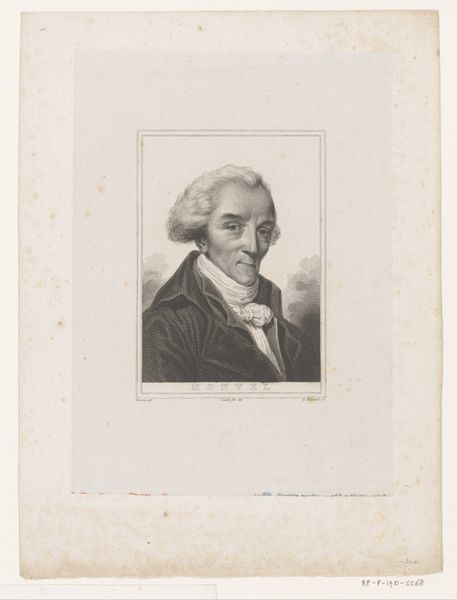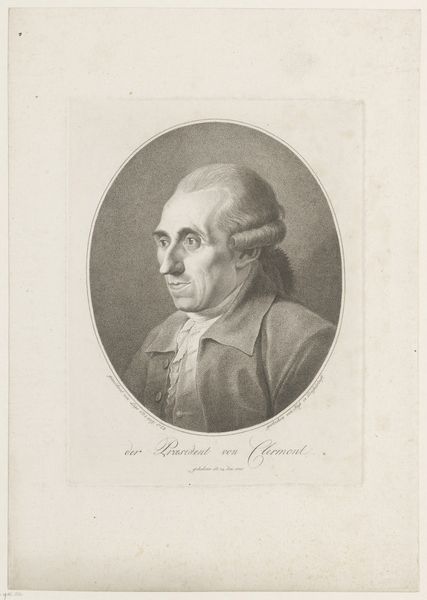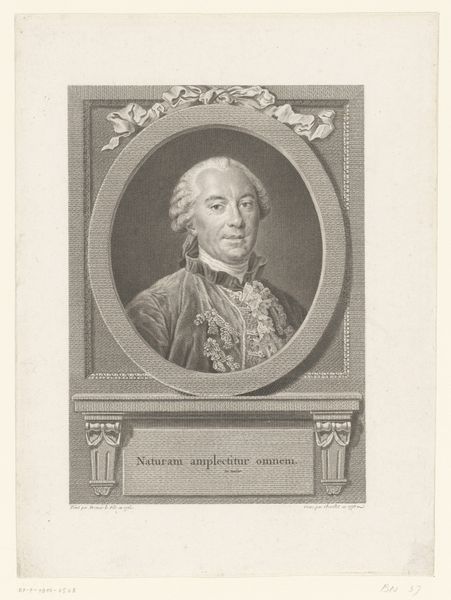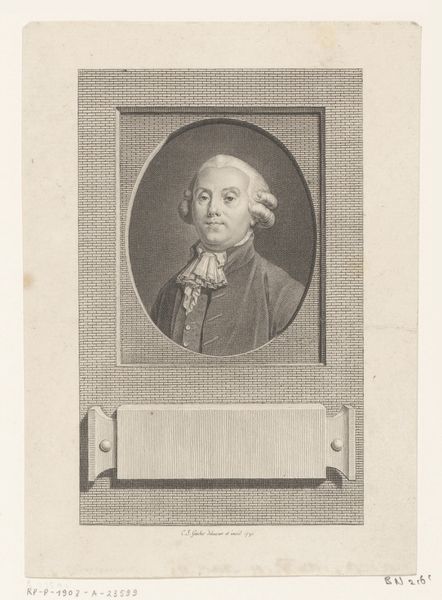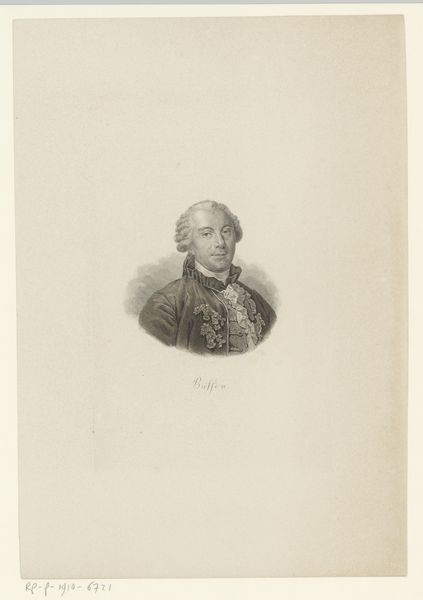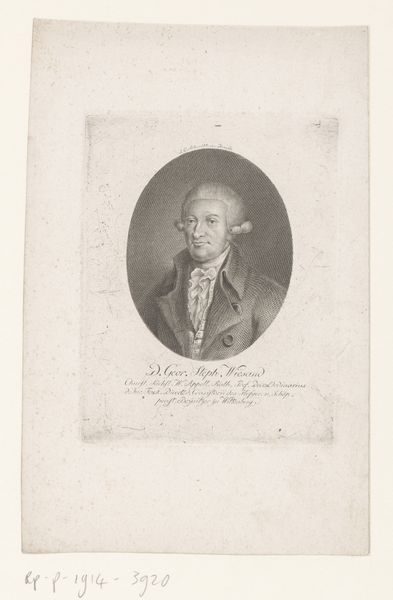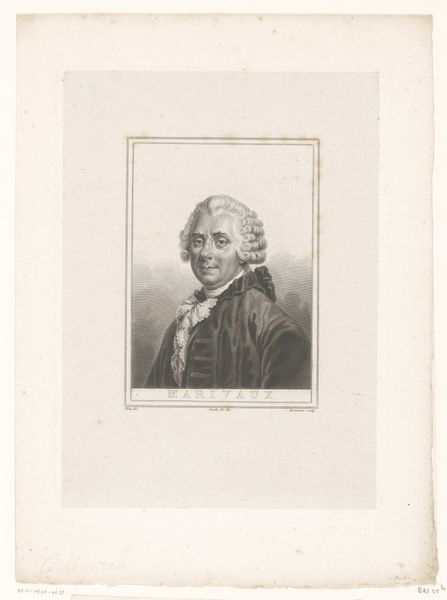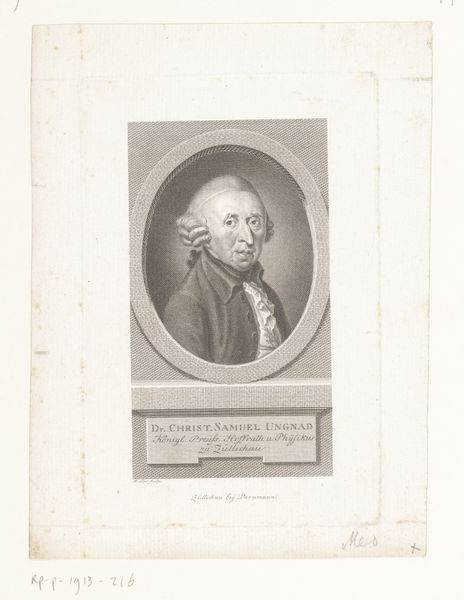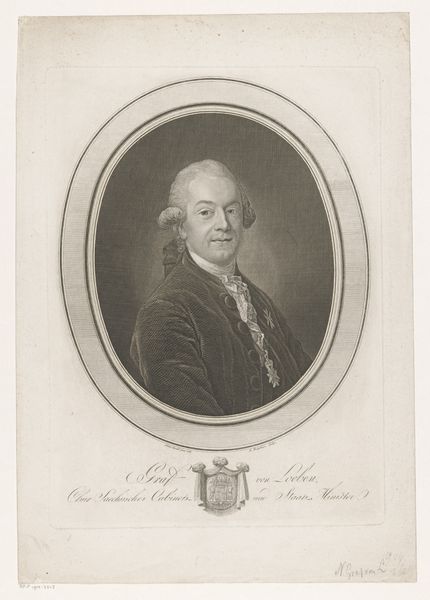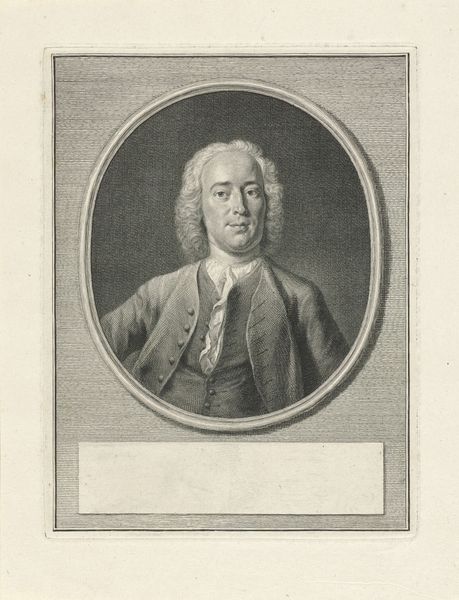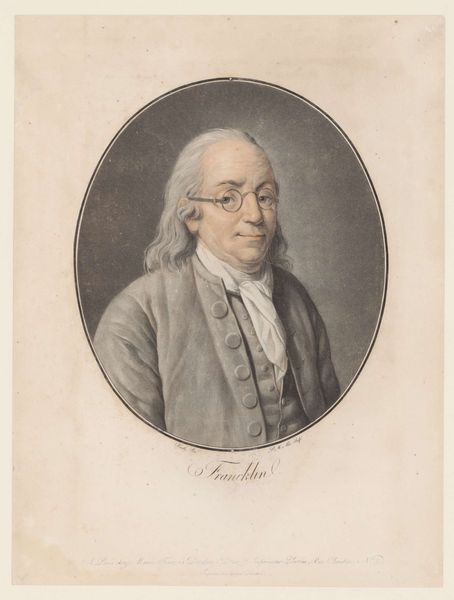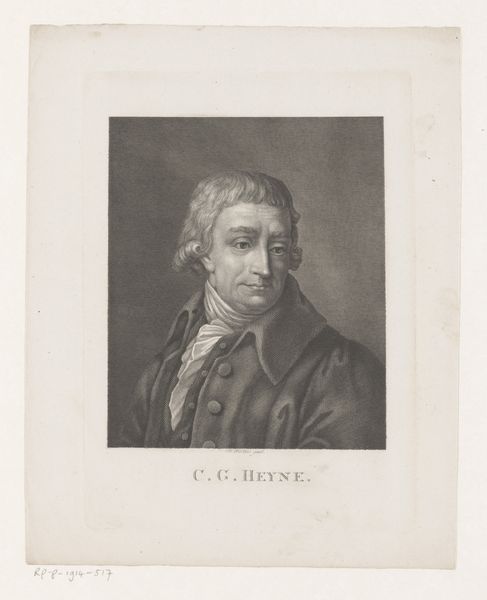
engraving
#
portrait
#
neoclacissism
#
historical photography
#
history-painting
#
engraving
Dimensions: height 170 mm, width 118 mm
Copyright: Rijks Museum: Open Domain
Editor: Here we have Christian Jakob Schlotterbeck's "Portret van Christian Friedrich Daniel Schubart," an engraving from 1783. There's a somber air about this portrait. I'm curious, what layers do you see within this seemingly straightforward depiction? Curator: It's interesting that you use the word "somber." Consider Schubart’s biography—a poet, musician, and outspoken critic of tyranny. Does the portrait not speak to the weight of political repression? Neoclassicism often masked radical ideas beneath a veneer of order. The artist presents Schubart as a man of importance, contained within a classical frame. But could this formal structure itself represent the very constraints Schubart resisted through his work? Editor: So, you see the portrait as a visual representation of the tension between societal expectations and Schubart's rebellious spirit? Is the rigid oval frame representative of the constraints of society? Curator: Precisely. And it forces us to ask, how does portraiture, a genre often commissioned by the powerful, engage with figures who challenge power? What does it mean to monumentalize someone who fought against the status quo using the visual language *of* the status quo? The act of creating his image then becomes complicated by these intersections. Editor: It almost feels subversive now, framing his rebelliousness within such a formal style. It highlights the complexities of artistic patronage and political expression. Curator: Indeed! Considering this engraving, perhaps it’s productive to view this tension between form and subject as a space of potential for re-imagining social relations. What appears at first glance as simply a stuffy depiction becomes, upon further reflection, an act of resistance through representation. Editor: That's a perspective I hadn't considered. It really sheds light on the multifaceted relationship between art, politics, and identity in the 18th century. Curator: Exactly, and by considering context, hopefully now, we can understand that the apparent “sobreness” speaks not only of Schubart, but more generally to the repression of free thinking!
Comments
No comments
Be the first to comment and join the conversation on the ultimate creative platform.
